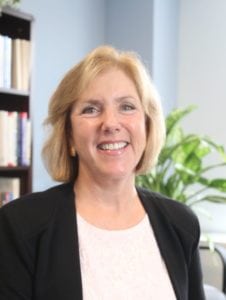
Betsy Brand, AYPF Executive Director
State education and school district leaders are constantly searching for evidence-based strategies to improve student outcomes and help youth be better prepared for further education, work, and civic engagement. Lots of time and attention are paid to curriculum, instruction, assessments, and teacher development, all appropriate areas to focus on. However, there is another time-tested strategy that education leaders should consider to improve student learning and development: national service.
National service programs¹ provide vital support to students at various points in their academic journey, whether it be support for kindergarten readiness, reading proficiency by the third grade, high school graduation, or college success. Young adults who participate in a service year contribute to all of these improved outcomes, and the service members also learn valuable leadership and professional skills themselves. Service year positions help leverage additional resources for schools and communities and can help target students in need. Currently, more than 44,000 national service members provide in-school and out-of-school support to at-risk youth, including one out of every four low-performing schools and one out of every ten charter schools. If this resource were more widely available to underserved communities, it could dramatically reduce the educational disparities that leave too many students without the skills they need for a successful life.
AYPF recently held the first in a three-part webinar series in partnership with Service Year Alliance to highlight how a year of service can help improve student outcomes.
Improved Educational Outcomes from National Service
The Reading Corps and Math Corps programs, supported by AmeriCorps, are great examples of how service can improve student outcomes. Reading Corps is an evidence-based literacy tutoring program delivered by AmeriCorps members that provides 20 minutes of daily support to Pre-K to third-grade students in small groups or one-on-one to improve early literacy skills required for school readiness and reading proficiency by third grade. A rigorous study by NORC at the University of Chicago shows elementary schools and preschool programs that implement Reading Corps get significantly greater outcomes for their students than programs that do not have access to Reading Corps. The study also found that students of color, students eligible for free- and reduced-price lunch, and English language learners were achieving outcomes equal to or better than their peers, and those with higher risk factors actually made stronger gains.
Math Corps is an evidence-based math tutoring program delivered by AmeriCorps members that provides 90 minutes of weekly tutoring to fourth to eighth grade students in pairs to improve foundational math skills focusing on algebra readiness. The program relies on rigorous training of service members and ongoing coaching support with master coaches. In an evaluation of the project in Minnesota, the average score for students who were in Math Corps on their state math test was approximately 17 points higher than the average score for students who did not participate in Math Corps.
Evans High School in Orlando, Florida is an example of a high school using national service strategies to support its youth. Student enrollment is approximately 2,500, and almost 98% of students are youth of color who qualify for free- and reduced-price lunch. Evans High School faces many common challenges as other large, urban high schools, including attendance issues, low academic achievement, and behavior problems. To address these challenges, the school district and school leadership have implemented multiple strategies and programs using service members to supplement their own staff. In addition to the principal, administrators, and teaching staff, Evans High School includes various service members from City Year, VISTA, the University of Central Florida, and other programs as part of their team. Service members are mentors to many high school students and help create stronger relationships with and connections to the school. Students with mentors showed a 17 percent increase in grade point average; students with mentors showed a four percent increase in English grades, and students with mentors showed a two percent increase in math grades. Disciplinary issues have declined over the years, with the most serious disciplinary issues declining from 61 in 2014-2015 to 43 in 2017-2018.
Service programs support a wide range of other important outcomes, like improved behavior, stronger sense of community and belonging, and a more positive school climate, all of which are interrelated with academic outcomes.
Funding for National Service
If service is a proven strategy for improving educational outcomes, how can states, districts, and schools cover the costs of more service programs? While most education leaders are probably familiar with funding from the Corporation for National and Community Service specifically designed to support national service, they may not know about the many other sources of funds that are flexible enough to support national service.
Programs that focus on PRE-K:
- Child Care Development Block Grant
- State Targeted Response Block Grant (STR)
- Head Start
- Maternal, Infant, and Early Childhood Home Visiting Program
- Social Impact Partnerships to Produce Results Act (SIPPRA)
- Temporary Assistance for Needy Families (TANF)
Programs that focus on K-12 Education:
- Title IV, Student Support and Academic Enrichment Grants of the Every Student Succeeds Act
- Carl D. Perkins Career and Technical Education Act
- Families First
- Community Development Block Grant
- Community Services Block Grant
- TANF
- STR
- SIPPRA
Programs that focus on postsecondary readiness and success:
After reading this blog, I hope you feel more inclined to explore service as a strategy to improve student outcomes and help more children and young people be well-prepared for their futures. Service Year Alliance stands ready to support organizations and education leaders in expanding and leveraging national service.
Join us for Part Two of our webinar series on November 14, 2018 on how national service helps the young people who are service members develop key skills in demand for today’s jobs, leading to a stronger workforce. Register here.


